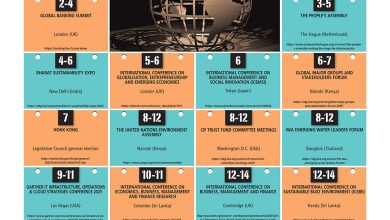SPOTLIGHT ON DEMOCRACY

POWER OF THE BALLOT
The US presidential election has demonstrated America’s commitment to democracy – Rajika Jayatilake explains
The 28th President of the US Woodrow Wilson said: “Democracy is not so much a form of government as a set of principles.” And indeed, it is a set of principles that critically tested American democratic ideals in the US presidential election.
Voters, as well as state and federal officials, rose up undaunted to defend their proud heritage and meet every challenge head-on.
Clearly, more votes were cast in the 2020 poll than in any previous US election. More than 159 million Americans voted – i.e. nearly 67  percent of the country’s eligible voters. According to the United States Elections Project, this was the highest voter turnout since 1900.
percent of the country’s eligible voters. According to the United States Elections Project, this was the highest voter turnout since 1900.
However, nothing could be normal in an election held in the midst of an unnerving pandemic. Almost 100 million Americans had voted before 3 November with 65 million of them having mailed or dropped off ballots. The rest stood in line for hours at early voting centres across the states. Most of these early voters were Democratic. In contrast, election day voters were mostly Republican.
This distinction was more pronounced following months of Trump’s disinformation efforts as he vilified mail in ballots and wanted his supporters to vote on election day. Democratic leaders encouraged mail in voting as a safe strategy amid surging COVID-19 cases.
Hours after the polls closed, the initial results (that were mostly from Republican ballots cast that day) trickled in. President Donald Trump appeared to be winning and analysts called this a “red mirage” because those results were based only on election day votes.
When early and mail in votes began to be counted, Trump’s lead evaporated. Democratic contender former Vice President Joe Biden was overtaking him – most significantly, in the battleground states of Arizona, Georgia, Michigan, Nevada, Pennsylvania and Wisconsin. This is when Trump tweeted “Stop the COUNT.”
Despite this, election officials in every state ensured that all legal votes were counted – even though the laborious process took days to accomplish. Meanwhile, Trump continued to undermine the integrity of the election with a daily surge of tweets claiming the election was being stolen.
Even as Trump and his campaign carried on discrediting the election, officials ranging from ballot counters to secretaries of state continued working regardless. Though the ex-president and his allies insulted and tried to intimidate these officers, they followed to the letter rules laid down in the constitution.
To counter these attacks, a coalition of federal and state officials asserted that the 2020 presidential election was the “most secure in American history.” They added: “Across the country, election officials are reviewing and double-checking the entire election process prior to finalising the result.”
Director of the Cybersecurity and Infrastructure Security Agency Chris Krebs, who led the election protection effort and repeatedly assured Americans through tweets about the integrity of the vote, was fired by Trump on Twitter.
In the US, a presidential candidate has to cross the winning threshold of 270 electoral college votes to win. Moreover, a candidate can win the popular vote and yet, lose the election unless the victory includes 270 electoral College votes. In 2016, Hillary Clinton received three million more popular votes than Trump but lost because she failed to secure 270 electoral votes.
On 7 November, the race was called for Joe Biden when he passed the 270 electoral College vote threshold. Trump became the first president since George H. W. Bush in 1992 to lose reelection.
Biden won over 80 million popular votes – the most cast for any presidential candidate in US history. The second highest number of popular votes polled in history was 74 million and those went to the Trump. He used that fact to convince his base that the Democrats stole the election despite Biden receiving at least six million votes more.
Further, instead of formally conceding the race, Trump continued to discredit the election and delayed transfer of power even as he claimed on Twitter that he had won. Though he filed over 40 lawsuits in state and federal courts to overturn Biden’s victory, most of them were either dismissed or withdrawn.
In Pennsylvania’s federal court of appeals, the three judge bench strongly rejected the Trump campaign lawsuit. Judge Stephanos Bibas, who was a Trump appointee, wrote: “Voters, not lawyers, choose the President. Ballots, not briefs, decide elections.”
Subsequently, in an insightful Thanksgiving address, then President-elect Biden noted: “If you want to know what beats deep in the heart of America, it is this – democracy. The right to determine our lives, our government, our leaders. The right to be heard. Our democracy was tested this year. And what we learned is this – the people of this nation are up to the task.”
Americans passed the critical test of electing their leader with flying colours even as democracy was under siege by the incumbent.





